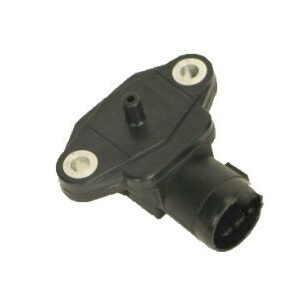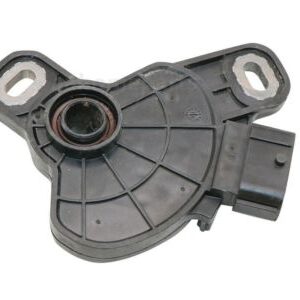**Navigating Precision: The Crucial Role of Steering Angle Sensors in Automotive Safety**
In the intricate dance of automotive engineering, where control meets maneuverability, one often-overlooked component silently guides the direction of your vehicle—the steering angle sensor. While drivers navigate roads with confidence, it’s the steering angle sensor that provides vital feedback to the vehicle’s stability control system, ensuring precise handling and safety in every turn. Join us as we explore the significance, functionality, and importance of steering angle sensors in the realm of automotive technology.
**Understanding the Essence: What is a Steering Angle Sensor?**
A steering angle sensor, also known as a steering position sensor or steering wheel angle sensor, is a critical component of modern vehicle stability control systems. Its primary function is to monitor the position and movement of the steering wheel, providing real-time feedback to the vehicle’s electronic stability control (ESC) or anti-lock braking system (ABS).
**The Evolution of Vehicle Dynamics**
In the early days of automotive engineering, vehicle stability was primarily controlled by the driver’s skill and experience. However, as vehicles became more complex and safety standards evolved, the need for more sophisticated stability control systems grew. Steering angle sensors emerged as a transformative technology, enabling automatic adjustment of vehicle dynamics to enhance safety and handling.
**The Significance of Stability Control**
In the dynamic realm of modern driving, where road conditions can change in an instant, maintaining stability and control is crucial for driver safety. Steering angle sensors play a pivotal role in this regard, providing valuable feedback to stability control systems, which can adjust braking force, throttle response, and other parameters to prevent skidding or loss of control.
**The Silent Observer: How Does a Steering Angle Sensor Work?**
Despite its unassuming appearance, the steering angle sensor employs sophisticated technology to fulfill its role effectively. Mounted near the steering column or steering rack, the sensor measures the angle of the steering wheel and detects changes in steering input.
As the driver turns the steering wheel, the sensor detects these movements and sends signals to the vehicle’s stability control system. Based on this feedback, the system can adjust brake pressure, engine torque, and other parameters to help maintain stability and control, especially in emergency situations or during aggressive maneuvers.
**The Unseen Benefits: Advantages of Steering Angle Sensors**
While steering angle sensors may operate quietly behind the scenes, their impact on vehicle safety and handling is undeniable. Here are some key advantages:
1. **Enhanced Safety:** Steering angle sensors help improve vehicle stability and reduce the risk of skidding or loss of control, especially in slippery or challenging road conditions.
2. **Precise Handling:** By providing real-time feedback on steering input, steering angle sensors enable more precise handling and control, enhancing the driver’s confidence and comfort behind the wheel.
3. **Improved Stability Control:** Integrated with stability control systems, steering angle sensors allow for automatic adjustments to vehicle dynamics, helping to maintain stability and control in various driving scenarios.
4. **Accurate Diagnostics:** Steering angle sensors provide valuable diagnostic information to technicians, aiding in the diagnosis and repair of stability control system issues.
**Looking Ahead: Innovations in Vehicle Stability Technology**
As automotive technology continues to advance, so too will the field of vehicle stability control technology. Innovations in steering angle sensor design, materials, and integration with other vehicle systems may lead to even more precise and efficient stability control solutions in the future. Furthermore, as vehicles transition towards electrification and autonomous driving, steering angle sensors will continue to play a crucial role in optimizing vehicle dynamics and safety.
**In Conclusion: The Guardian of Vehicle Stability**
In the dynamic world of automotive engineering, where every turn counts, steering angle sensors emerge as silent but indispensable guardians of vehicle stability. Their unassuming presence belies their critical importance in ensuring precise handling, safety, and control on the road. So, the next time you navigate a curve with confidence, remember to thank the unsung hero working diligently behind the scenes—the steering angle sensor.
Only 2 left in stock (can be backordered)
$29,137.67
**Navigating Precision: The Crucial Role of Steering Angle Sensors in Automotive Safety**
In the intricate dance of automotive engineering, where control meets maneuverability, one often-overlooked component silently guides the direction of your vehicle—the steering angle sensor. While drivers navigate roads with confidence, it’s the steering angle sensor that provides vital feedback to the vehicle’s stability control system, ensuring precise handling and safety in every turn. Join us as we explore the significance, functionality, and importance of steering angle sensors in the realm of automotive technology.
**Understanding the Essence: What is a Steering Angle Sensor?**
A steering angle sensor, also known as a steering position sensor or steering wheel angle sensor, is a critical component of modern vehicle stability control systems. Its primary function is to monitor the position and movement of the steering wheel, providing real-time feedback to the vehicle’s electronic stability control (ESC) or anti-lock braking system (ABS).
**The Evolution of Vehicle Dynamics**
In the early days of automotive engineering, vehicle stability was primarily controlled by the driver’s skill and experience. However, as vehicles became more complex and safety standards evolved, the need for more sophisticated stability control systems grew. Steering angle sensors emerged as a transformative technology, enabling automatic adjustment of vehicle dynamics to enhance safety and handling.
**The Significance of Stability Control**
In the dynamic realm of modern driving, where road conditions can change in an instant, maintaining stability and control is crucial for driver safety. Steering angle sensors play a pivotal role in this regard, providing valuable feedback to stability control systems, which can adjust braking force, throttle response, and other parameters to prevent skidding or loss of control.
**The Silent Observer: How Does a Steering Angle Sensor Work?**
Despite its unassuming appearance, the steering angle sensor employs sophisticated technology to fulfill its role effectively. Mounted near the steering column or steering rack, the sensor measures the angle of the steering wheel and detects changes in steering input.
As the driver turns the steering wheel, the sensor detects these movements and sends signals to the vehicle’s stability control system. Based on this feedback, the system can adjust brake pressure, engine torque, and other parameters to help maintain stability and control, especially in emergency situations or during aggressive maneuvers.
**The Unseen Benefits: Advantages of Steering Angle Sensors**
While steering angle sensors may operate quietly behind the scenes, their impact on vehicle safety and handling is undeniable. Here are some key advantages:
1. **Enhanced Safety:** Steering angle sensors help improve vehicle stability and reduce the risk of skidding or loss of control, especially in slippery or challenging road conditions.
2. **Precise Handling:** By providing real-time feedback on steering input, steering angle sensors enable more precise handling and control, enhancing the driver’s confidence and comfort behind the wheel.
3. **Improved Stability Control:** Integrated with stability control systems, steering angle sensors allow for automatic adjustments to vehicle dynamics, helping to maintain stability and control in various driving scenarios.
4. **Accurate Diagnostics:** Steering angle sensors provide valuable diagnostic information to technicians, aiding in the diagnosis and repair of stability control system issues.
**Looking Ahead: Innovations in Vehicle Stability Technology**
As automotive technology continues to advance, so too will the field of vehicle stability control technology. Innovations in steering angle sensor design, materials, and integration with other vehicle systems may lead to even more precise and efficient stability control solutions in the future. Furthermore, as vehicles transition towards electrification and autonomous driving, steering angle sensors will continue to play a crucial role in optimizing vehicle dynamics and safety.
**In Conclusion: The Guardian of Vehicle Stability**
In the dynamic world of automotive engineering, where every turn counts, steering angle sensors emerge as silent but indispensable guardians of vehicle stability. Their unassuming presence belies their critical importance in ensuring precise handling, safety, and control on the road. So, the next time you navigate a curve with confidence, remember to thank the unsung hero working diligently behind the scenes—the steering angle sensor.
| Weight | 0.2 kg |
|---|---|
| Warehouse | Inventory at warehouse 2 |


Get E-mail updates about our latest products and special offers.
Sensors and More is Jamaica’s ultimate online auto parts store. Established in 2020, we specialize in genuine electrical parts for Japanese, Read more…
Reviews
There are no reviews yet.